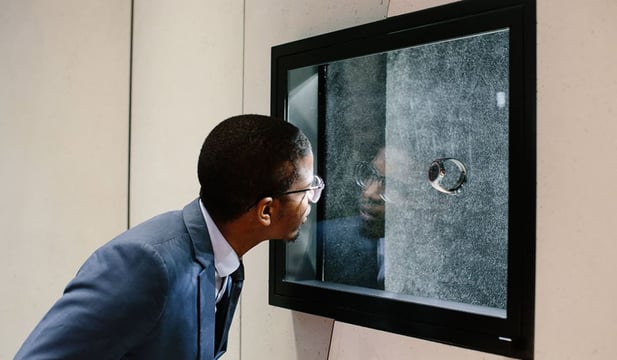7 Strategies for Enhancing Store Conversion Rates through Visual Merchandising
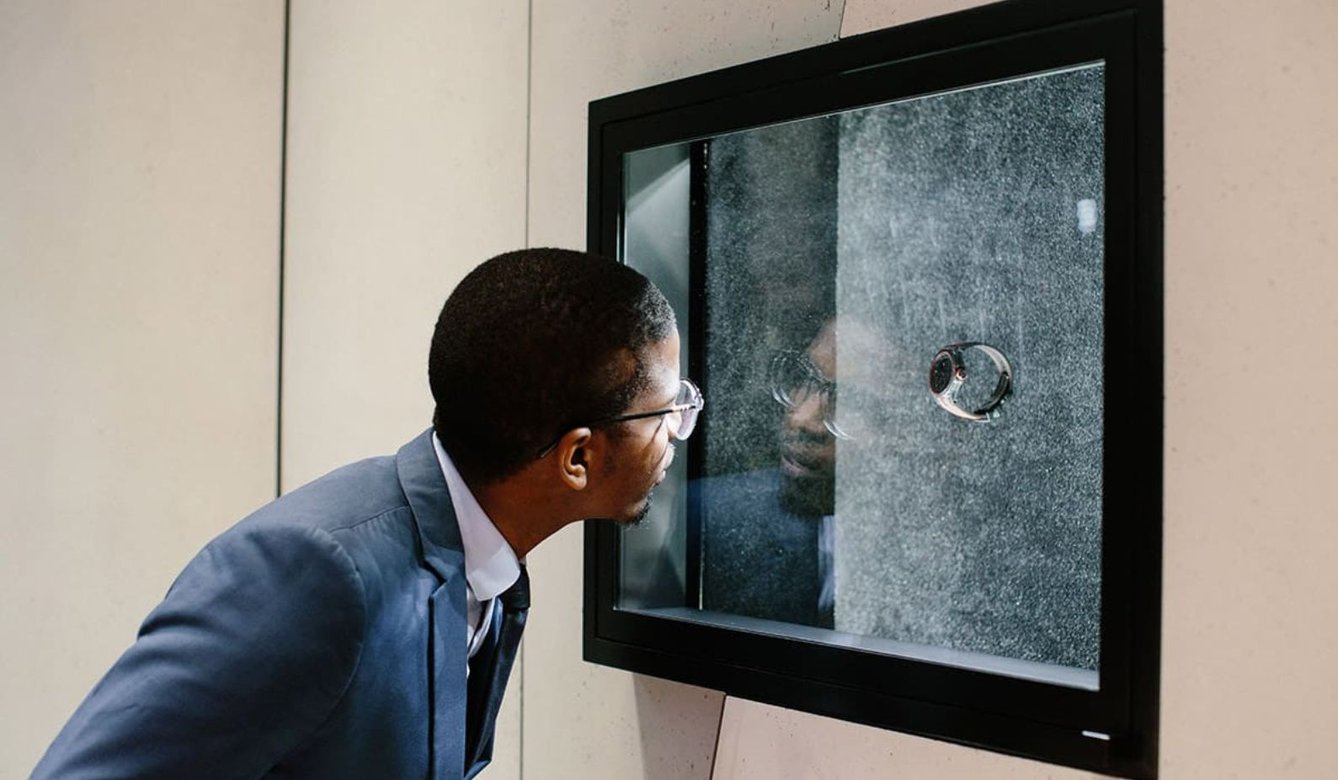
7 Strategies for Enhancing Store Conversion Rates through Visual Merchandising
Savvy merchandisers know that every square foot counts. When executed well, your visual merchandising strategy can serve as an additional salesperson that showcases your catalog in the best possible light to drive conversions.
Now, we know that the "conversions" component, in particular, is top of mind among retailers. Not only are today's shoppers more conscious of their spending, but brick-and-mortar stores must also contend with digital retailers siphoning away in-store traffic.
It's more important than ever for retail merchandisers to develop displays that attract traffic and lead shoppers toward the sale.
And that's precisely what we'll discuss in this post. We shed light on how to use visual merchandising to enhance the shopping experience and ultimately increase in-store conversion rates.
UNDERSTANDING THE IN-STORE CONVERSION RATE
Before diving into specific tactics, let's go back to the fundamentals of in-store conversion. Measuring the conversion rate in brick-and-mortar stores is pretty straightforward.
Simply divide your total foot traffic (which you can obtain using people counters) by the number of conversions (using your POS data) and multiply it by 100.
In-store conversion rate formula
Expressed as a formula, you calculate the conversion rate as follows:
In-Store Conversion Rate = ( Total Foot Traffic / Number of Sales Transactions ) ×100
For example, if you had 200 visitors to your store in a day and made 50 sales, your in-store conversion rate would be:
Conversion Rate = ( 50 / 200 ) × 100 = 25 %
This means 25% of the people who entered the store made a purchase.
In most cases, the higher your conversion rate, the higher your revenue. That's why it's vital that you optimize your visual merchandising initiatives.
1. USE STORIES AND THEMES TO ATTRACT ATTENTIONs
As much as we want to think that we're all data-driven, analytical beings, the fact is the human brain naturally gravitates toward stories. Research cited by Stanford University shows that stories are 22 times more memorable than facts alone.
You can apply this principle to your visual merchandising efforts by weaving storytelling elements into your displays. Encourage shoppers to go on a journey through your merchandise.
Billy Parker, Director at GiftDelivery.co.uk, says that storytelling in retail merchandising enables merchants to "create a captivating display that not only showcases their products but also evokes emotions and encourages customers to make a purchase."
Take a look at this window display from LoveShackFancy, which features love letters alongside the fashion merchandise. The display, created specifically for Valentine's Day, engages customers in a romantic narrative. The display not only highlights the products but also taps into the emotions associated with Valentine's Day, encouraging people to enter the store and, ideally, make a purchase.
2. IMPLEMENT STRATEGIC PRODUCT PLACEMENT
Curate and position products in a way that guides customer flow and highlights notable items. Your key objective should be to increase product visibility and your store's overall purchase rate.
One way to do this is to identify your high-margin or high-demand products and strategically place them along the customer's natural browsing path.
In the grocery industry, baked goods are known for having some of the highest markups. So, it's no surprise that many supermarkets have their baked goods section closer to the entrance.
At US grocery stores such as Ralph's and Sprout's, baked goods are often positioned near the front of the store on the right-hand side as shoppers enter, capitalizing on the tendency for people to turn right upon entering.
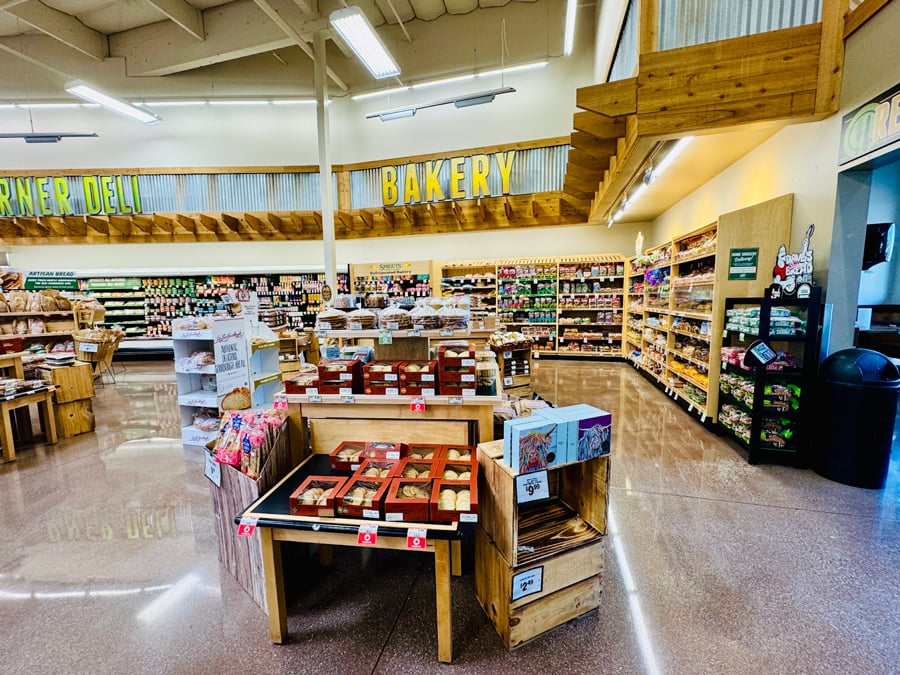
Boutique and specialty retailers can do something similar by creating themed displays or featured product tables at the front of the store or in other high-traffic areas.
For example, if you sell gift items, consider placing your best-selling or seasonal products on a beautifully decorated table right where customers are most likely to start their shopping journey.
You can also view product placement through the lens of impulse purchases. If you sell reasonably priced items that are easy to grasp and buy, position them near the checkout area or along the path leading to it.
This placement takes advantage of the customer's final moments in the store, where the likelihood of making last-minute decisions is high.
Keith Carpentier, Founder and CEO at Qbuster Technologies, remarks that you should "Use your space to its fullest, making sure to be strategic about not only the products included (think: top sellers, seasonality, promotions, grab-and-go) but also what will physically fit well, look attractive, and have the best impulse purchase potential."
3. LEVERAGE SEASONAL AND TREND-BASED MERCHANDISING
Keep up with current and upcoming holidays and incorporate them into your visual merchandising strategy. Doing so makes your store more relevant and engaging for the season and prods customers to make timely purchases.
Take Target, which excels in seasonal merchandising by transforming sections of its stores to reflect the current holiday.
For Valentine's Day, Target showcases themed merchandise, such as red and pink accessories, flowers, and chocolates. Target then promotes these items prominently in-store, creating Valentine's Day shelves that are meticulously merchandised to optimize sales.
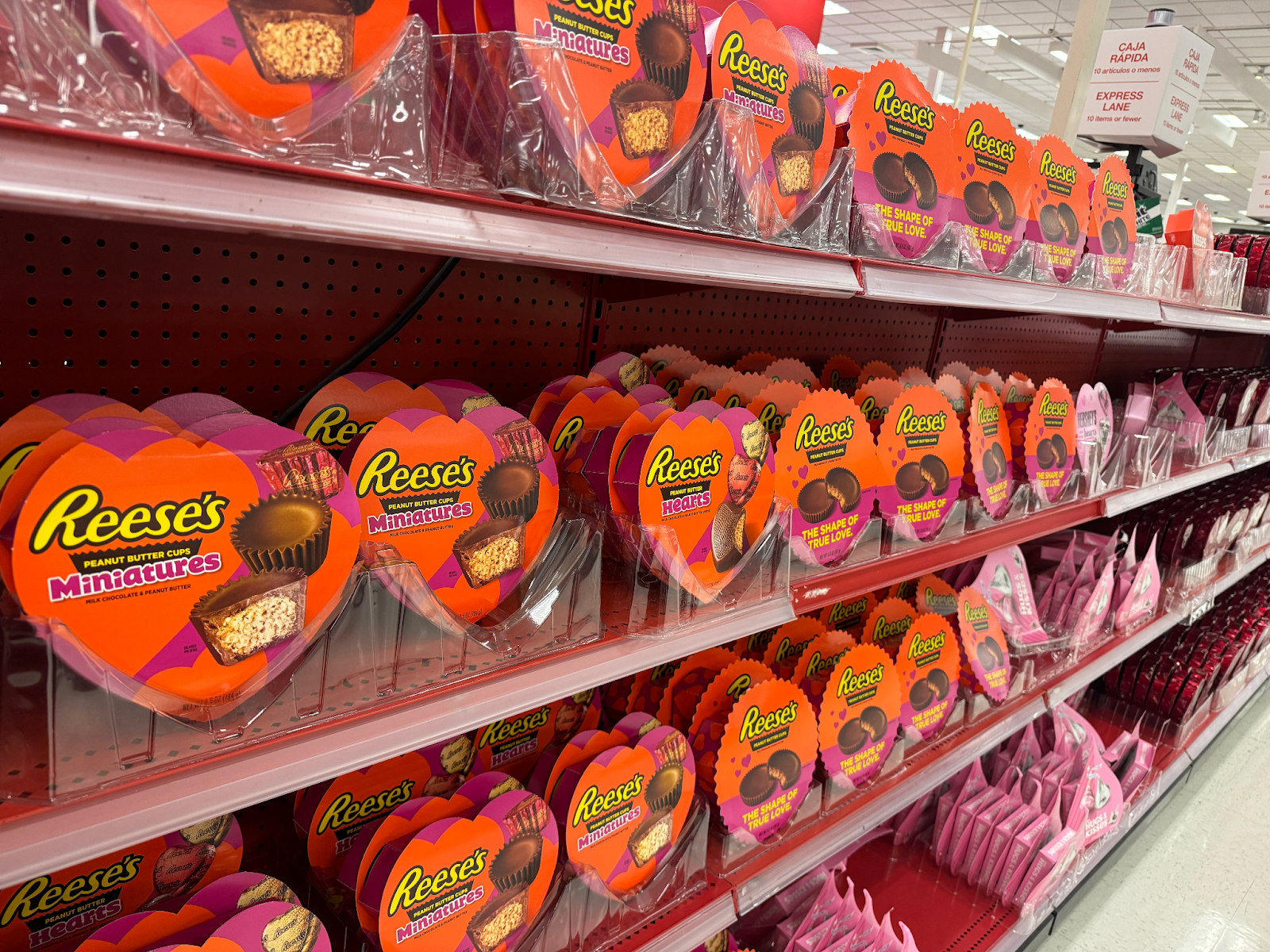
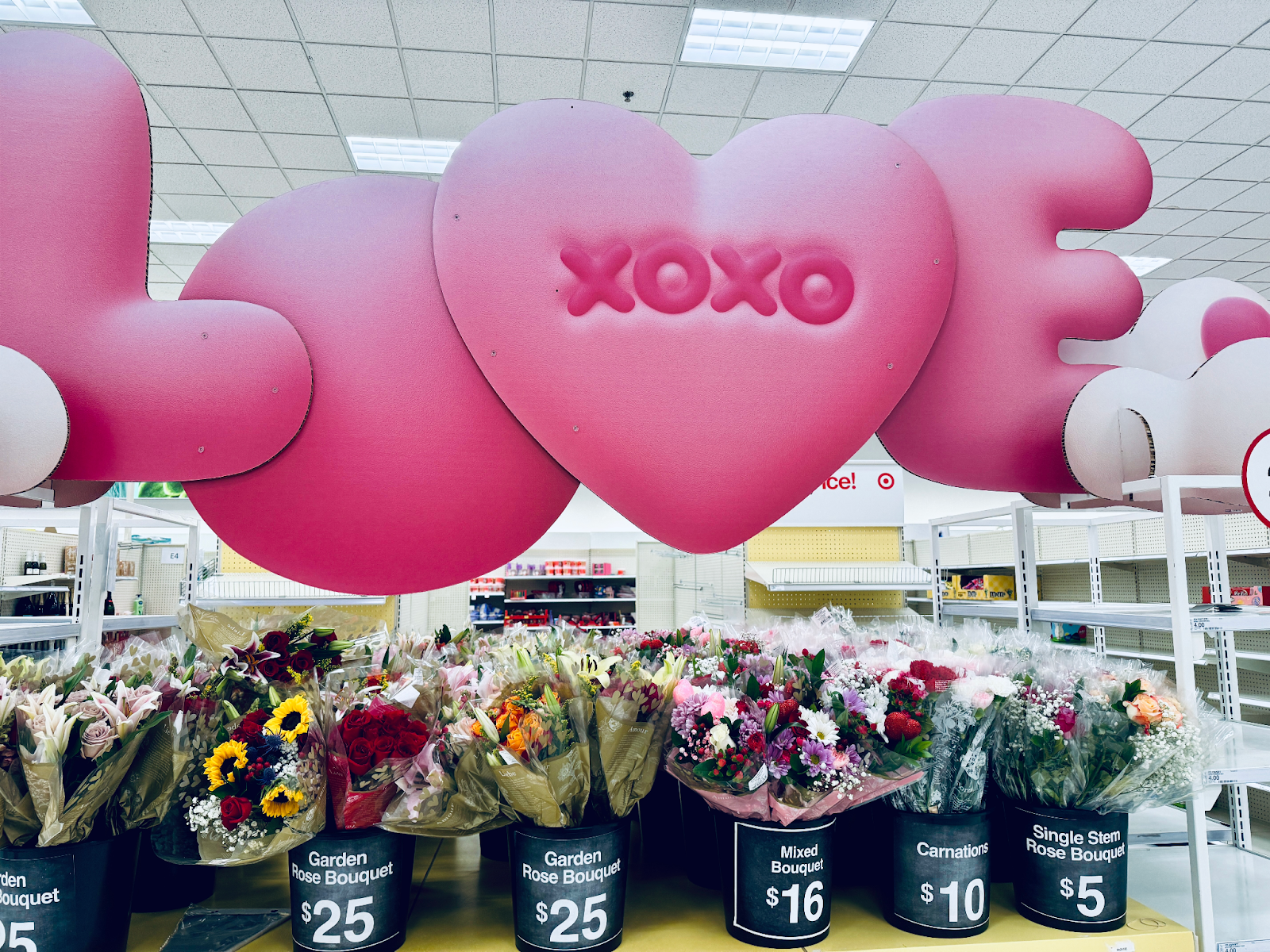
4. CONSIDER INTERACTIVE DISPLAYS AND EXPERIENTIAL ELEMENTS
The best merchandising initiatives aren't just "visual" — they're also experiential. They encourage shoppers to interact with products and displays, making the trip more memorable.
Many retailers turn to technology to elevate their in-store merchandising. Think: touchscreen displays, kiosks, and augmented reality.
But screens aren't the only way to infuse technology into your displays. Consider Levita, a company that uses flying object technology to help retailers showcase their products in new and unique ways.
"What Levita's technology offers is to come back to the basics and put all the focus again on the product storytelling," explains Viviane Paraschiv, Business Development and Marketing Director at Levita.
"Through our levitation technology we're able to showcase the product from all its angles to highlight the craftsmanship, the intricate details of the product, bring some magic in the customer experience and visual merchandising without the use of any digital tools."
According to Viviane, Levita's clients have seen remarkable results, including increased conversions and customer engagement.
"Compared to the previous collaboration launch, the client observed a double-digit surge in sales," she shared. "The store's social media stats also saw an uptick in reach, engagement, positive comments and ultimately followers showcasing also the marketing impact of Levita's technology."
5. INCORPORATE SOCIAL PROOF
Social proof is a powerful sales and conversion tool, and it's one of the reasons why star ratings and customer reviews are indispensable in ecommerce. In fact, a study by Spiegel Research Center shows that "Displaying reviews can increase conversion by 270%."
You can leverage social proof in your in-store merchandising by highlighting popular items in your displays. Adding signage along the lines of "People also purchased" or "Popular online" can influence purchasing decisions and increase the likelihood of sales.
Amazon uses this tactic in its Amazon Fresh grocery stores.
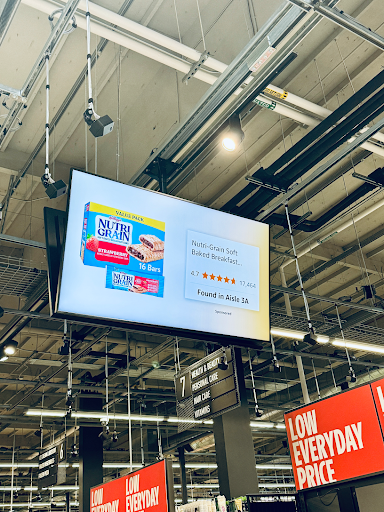
6. USE CUSTOMER DATA AND PREFERENCES IN YOUR DISPLAYS
If you're using a point of sale and retail analytics solution (and you totally should), then you likely have a decent amount of customer data.
You know your customers' demographics. You're familiar with their preferences. You may even be aware of where they live and work.
Put all that information to good use in your visual merchandising strategy. For example, if you know the products that shoppers frequently buy, then you can put those items front and center in your displays.
Or, if you've created a solid persona of your target customer (i.e., you know their age, gender, etc.), design your displays to appeal directly to that demographic's interests and lifestyle. A retailer targeting baby boomers, for instance, would have a different visual merchandising strategy than a store that wants to reach millennials.
7. DON'T FORGET TO UPDATE AND REFRESH YOUR DISPLAYS REGULARLY
Visual merchandising displays that feel stale and dated are a customer turnoff. So, stay on top of updating and refreshing your displays. You want your merchandising efforts to reflect the latest trends, products, and seasonal items. In addition to keeping your store looking fresh and dynamic, this practice also encourages repeat visits as customers look forward to discovering something new each time they shop.
The right frequency or schedule for when to update your displays will depend on your store. Retailers in high-traffic and busy areas may need to update their displays more often than those in a quiet location.
That said, a good rule of thumb is to reassess and potentially update your displays at least once a month. You may also need to adjust the frequency to align with major holidays, seasons, or marketing campaigns.
FINAL WORDS
The recommendations and examples discussed in this piece highlight the importance of having a strong visual merchandising strategy.
That being said, retail success isn't just about strategy. Equally important is retail execution. Once you have a merchandising plan in place, equip your in-store teams with the tools they need to implement the proper merchandising practices. This is where IWD comes in. From easy-to-use planogram software to field team communication tools, IWD's visual merchandising platform lets you ideate, strategize, and execute efficiently.
Stay on top of in-store execution and provide the ideal customer experience. With IWD, you can rest easy knowing that field staff implements guidelines and promotions correctly so that your stores appear and perform the way you intend them to.
Follow IWD on Facebook, LinkedIn, and Instagram or subscribe to our newsletter.

